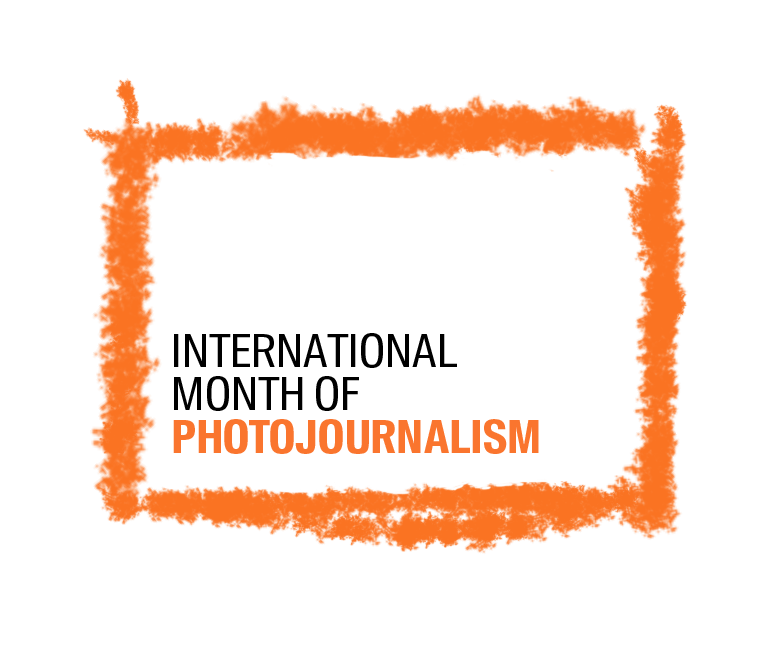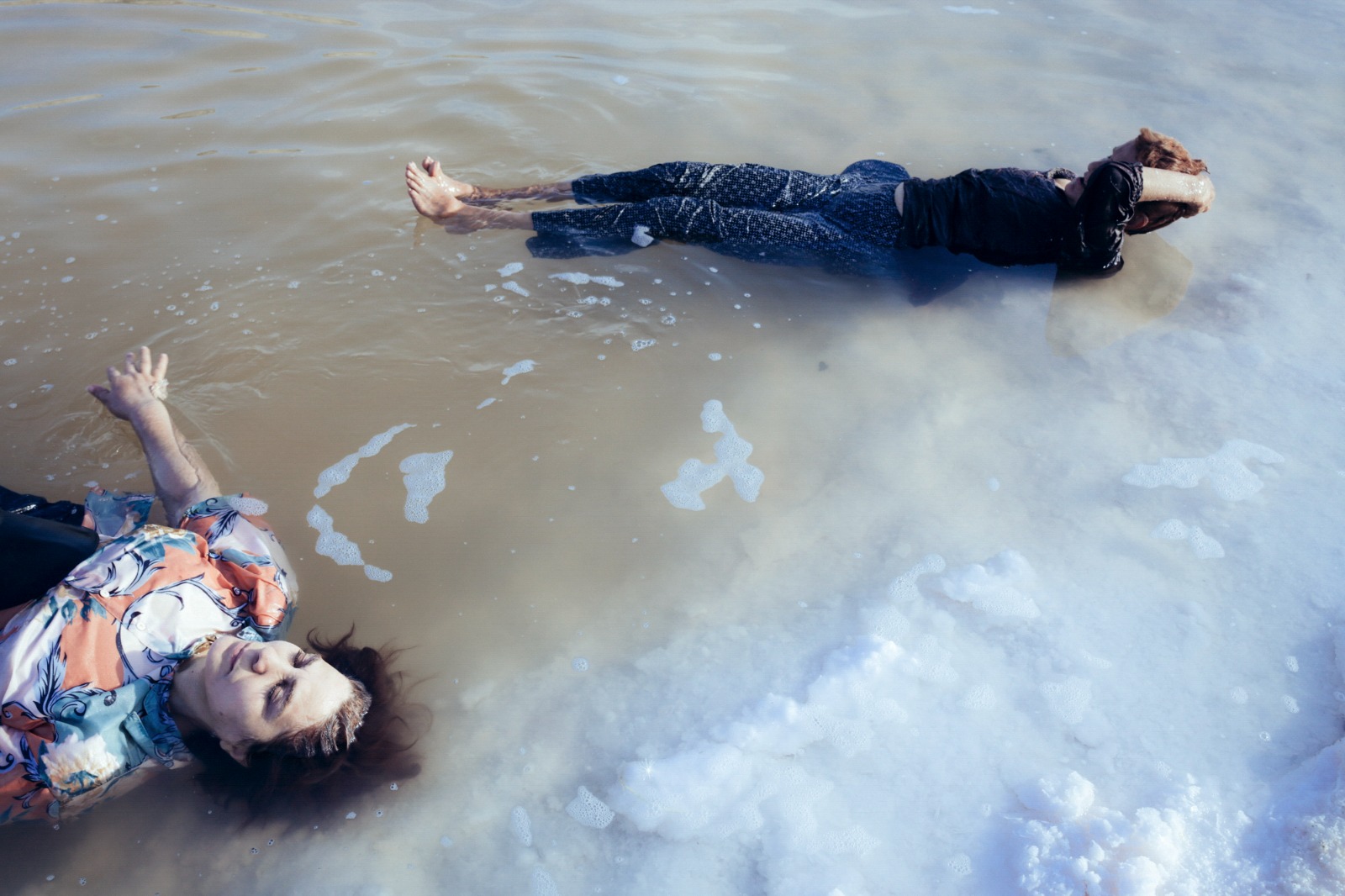
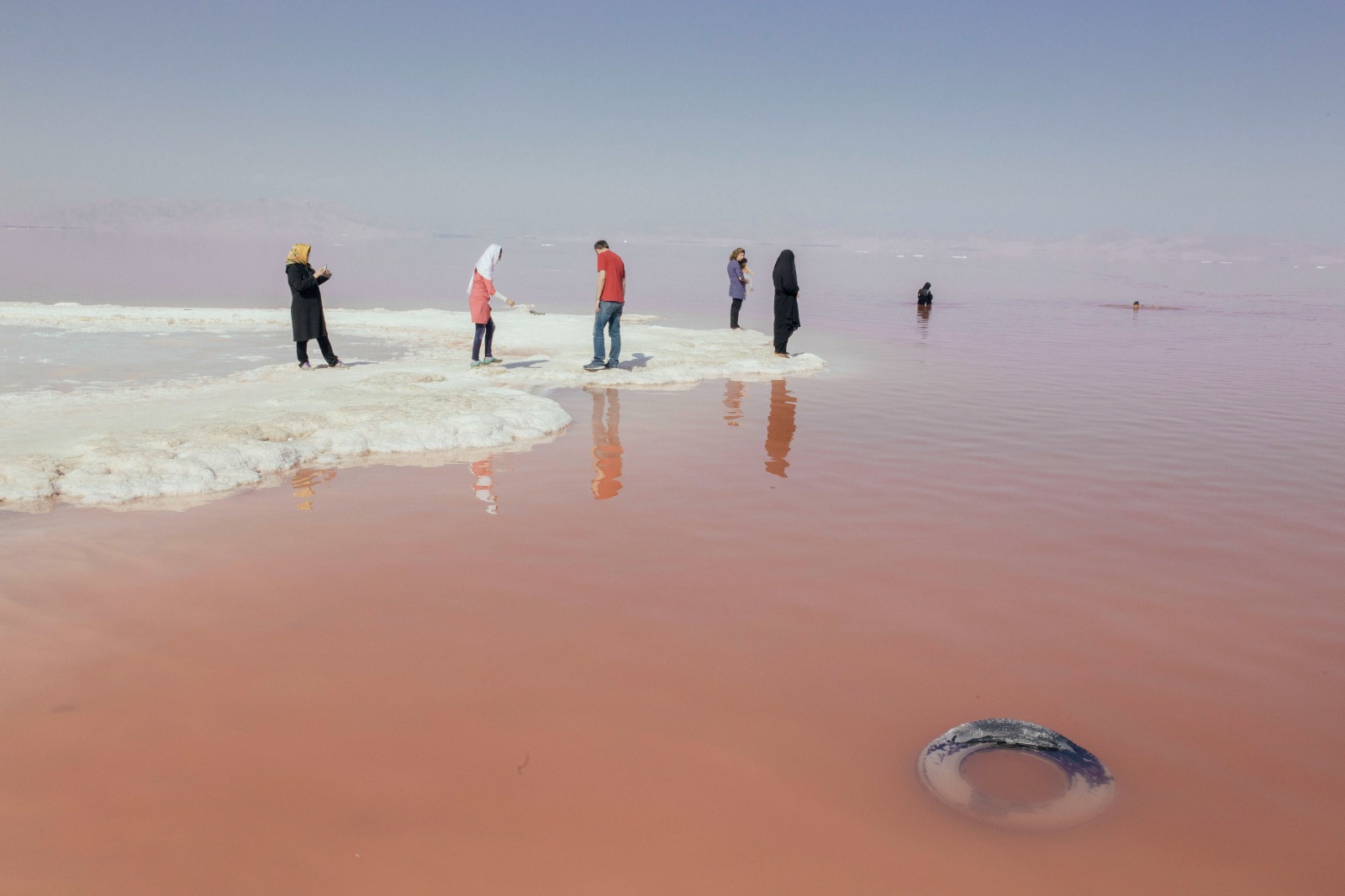
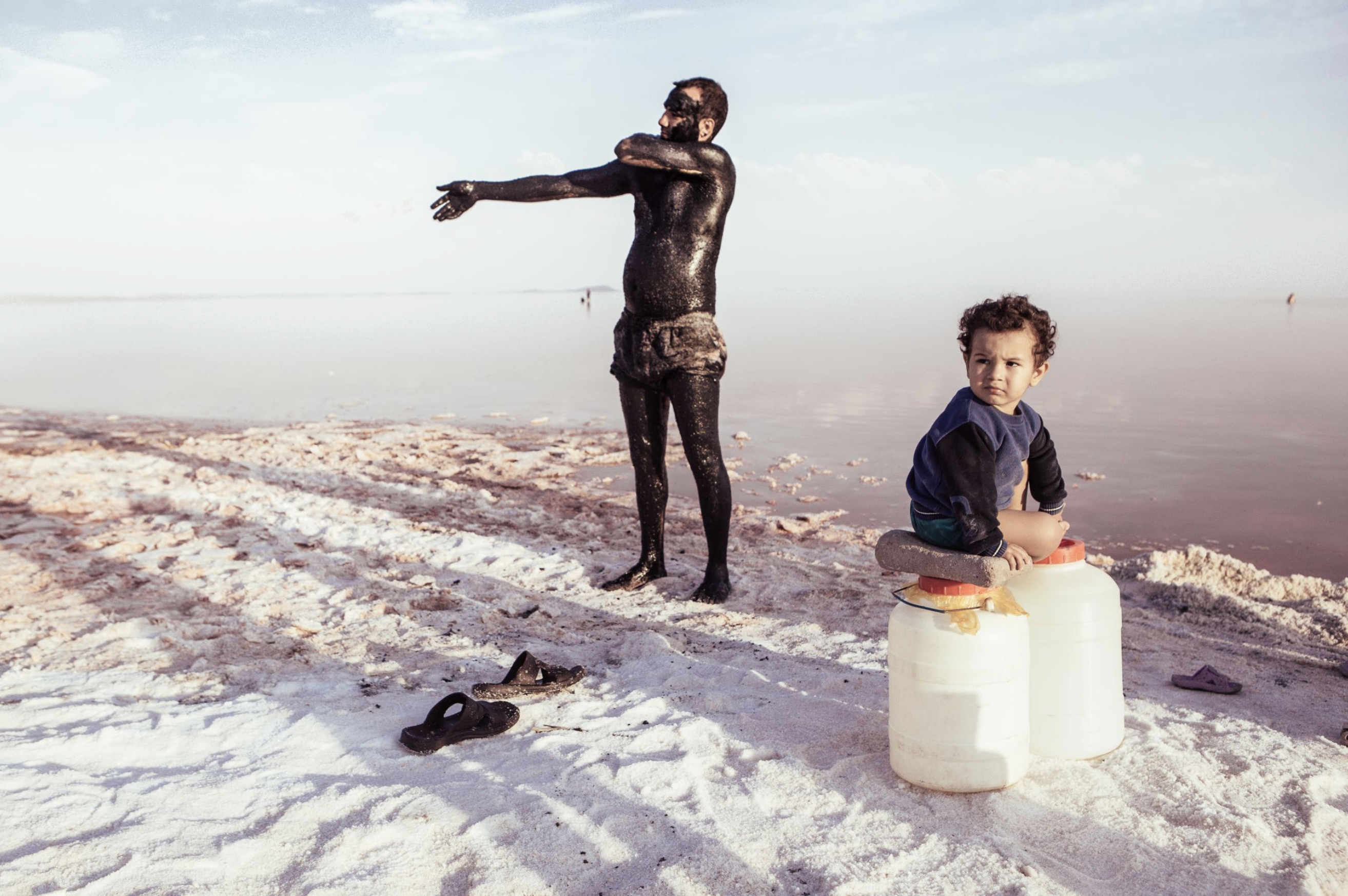
CATTEDRALE EX MACELLO
VIA ALVISE CORNARO 1
TUE to SUN 10 A.M. – 7 P.M.
Solmaz Daryani
“The Eyes of the Earth”
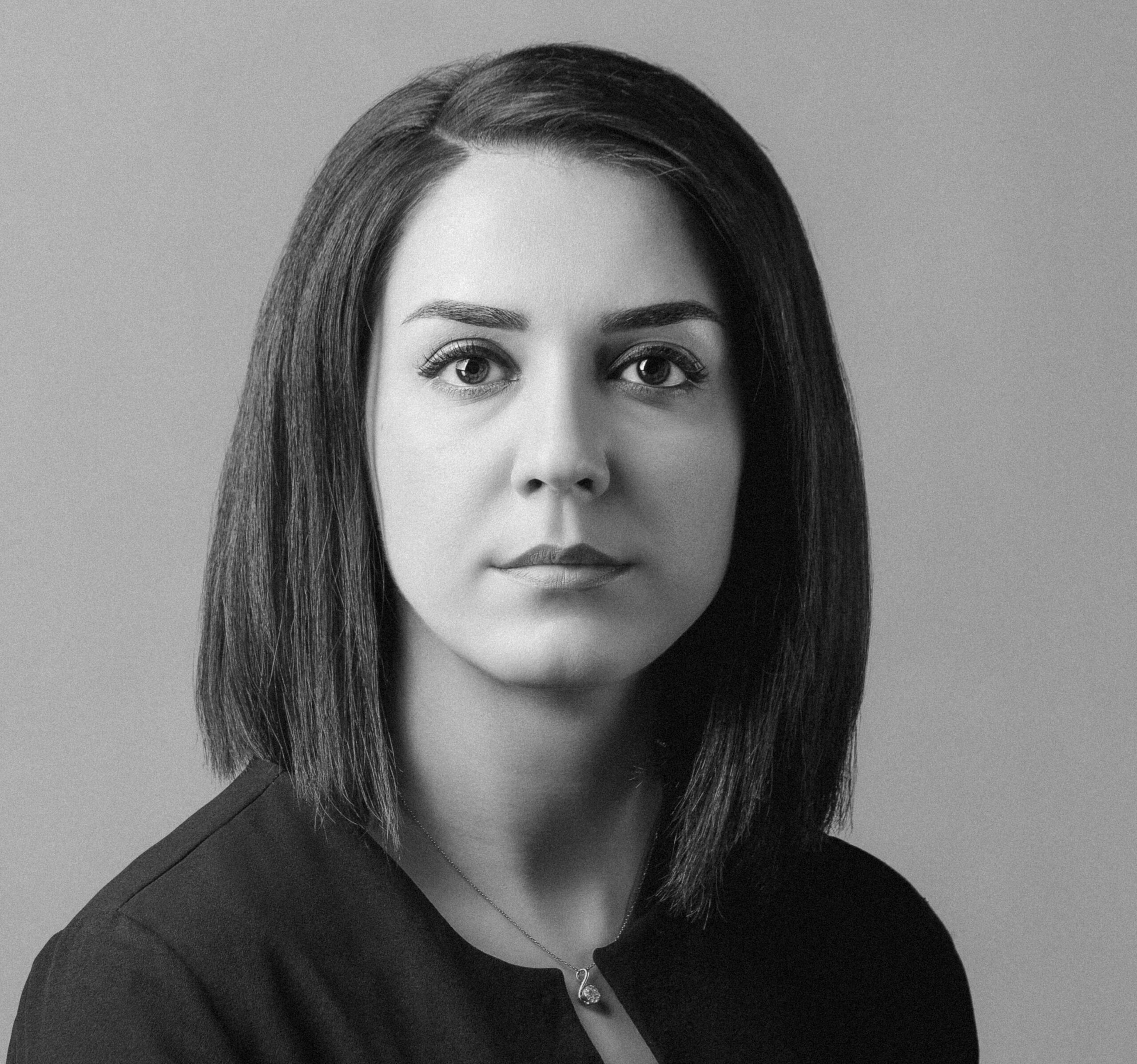
Location: IRAN
Solmaz Daryani grew up beside Lake Urmia, once the largest lake in the Middle East and the second-largest salt lake on the planet. The nearly six million people who live in the Urmia basin have deep social and economic ties with this shrinking body of water. The Turk-Azeri people, who live around the lake, treasure it as a symbol of their identity, calling it “the turquoise solitaire of Azerbaijan.”
Once a thriving tourist destination, Lake Urmia provided countless people, including my mother’s family, livelihoods. Solmaz Daryani’s grandfather ran a lakefront motel in the touristy port city of Sharafkhaneh, and her uncles were sailors. She spent all her childhood summers on the shore of the salt lake in my grandparents’ house. Solmaz Daryani cherishes those memories and still remembers the sound of the waves, the chatter of beachside vacationers, the sulfur smell of the dark mud, and the salty breeze in the mid-afternoon heat.
Salt lake Urmia remains a UNESCO biosphere reserve. However, the lake has lost 88% of its area and 80% of its volume since 1972 due to increasing temperatures, excessive dam constructions, water mismanagement, population growth, and agricultural sector expansion to ensure national food security after eight years of the Iran-Iraq war.
As Lake Urmia dried up, local tourism and agriculture suffered. Winds that whip across the lake blow salt dust to farm fields, slowly rendering the soil infertile. Like so many other people around the lake, my grandfather’s motel and gardens now lie in ruins. The port town is now a sparsely populated village that young people flee for nearby cities. Most of the residents who have stayed are elderly. Neither port town nor Salt lake resembles the place of my childhood memories.
The vast consequences of this environmental catastrophe have finally triggered a coordinated effort to save the lake. Rescuing the lake has been an international effort and collaboration between Iranian government ministries, the Urmia Lake Restoration Program, and UNDP. Between 2018 and 2019, above-average precipitation has helped to turn the tide. however, there is still a long way to go for the lake, and it’s far from its glory days.
The vanishing of Lake Urmia is much more than an environmental hazard; it is an emotional wound in people’s memory. For those who remember what this place once was, the lake is much more than a receding blue spot on the world map. It is a part of our identity, and we can only hope that it does not vanish forever.
ABOUT SOLMAZ DARYANI
Solmaz Daryani is an Iranian documentary photographer currently based in both Iran and the UK. She is a grantee of the Magnum Foundation and the National Geographic Society and a member of Women Photograph and Diversify Photo. Her work mainly focuses on exploring the themes of climate change and water crisis, with a keen interest in human relationships with the environment, communities, and cultures.
Solmaz’s ongoing project, The Eyes of Earth, has received multiple accolades, including the 2015 London Magnum Photos Grant, the 2020 Alexandra Boulat scholarship, the 2018 PhotogrVphy Grant, and the 2021 FotoEvidence Book Award.
She graduated from Tabriz University with a degree in computer science in 2011 and later pursued her passion for photography through self-study. She also continued her education at the Danish School of Media and Journalism (DMJX) in 2020.
Solmaz Daryani’s work has been recognized and published by numerous international publications, including National Geographic Magazine, The New York Times, Der Spiegel, Atlas Obscura, Foreign Policy Magazine, L’OBS Magazine, Le Monde, and Polka Magazine. Her work has also been featured in various Iranian newspapers and publications.
